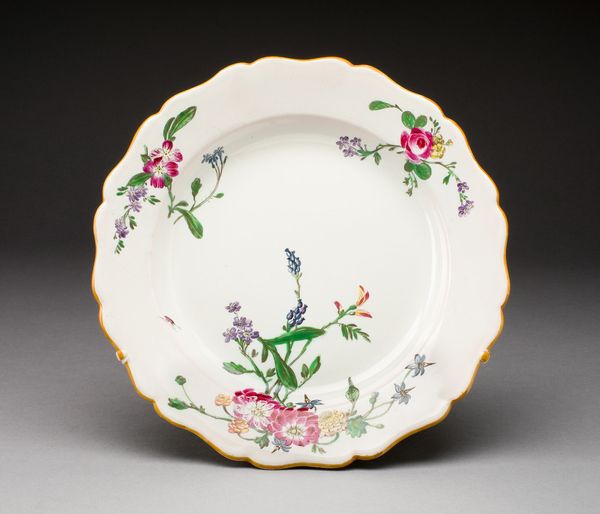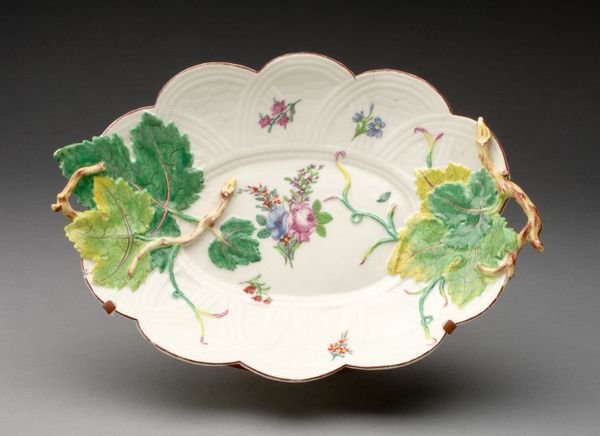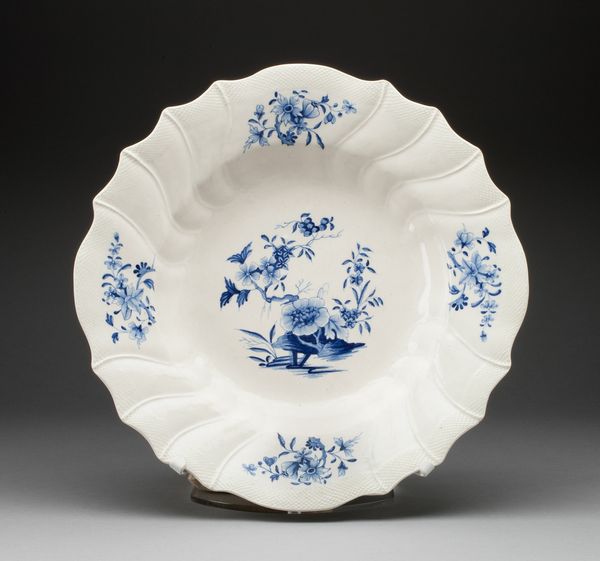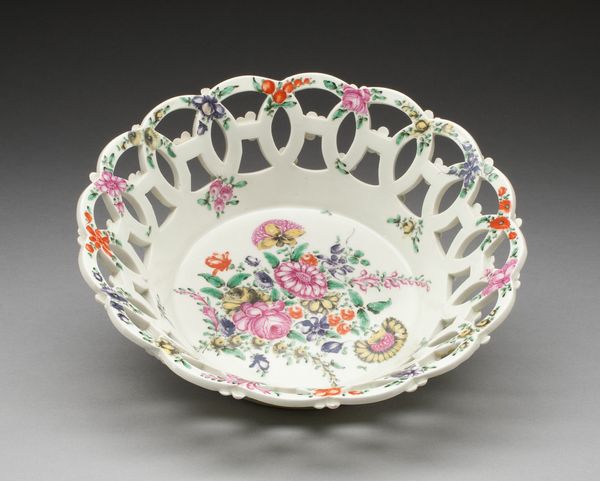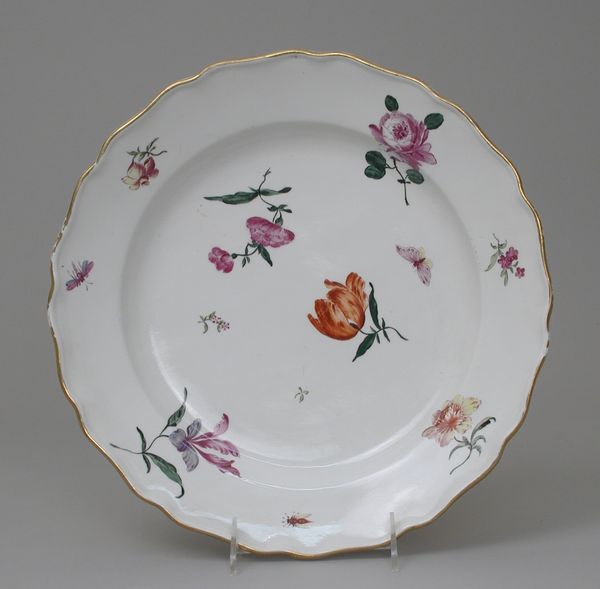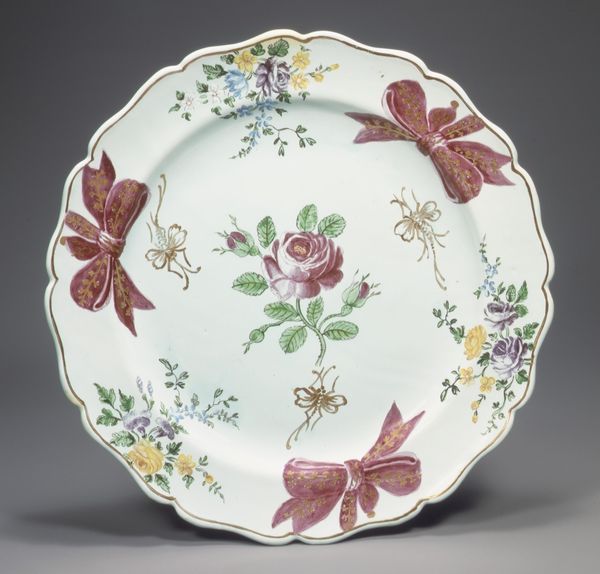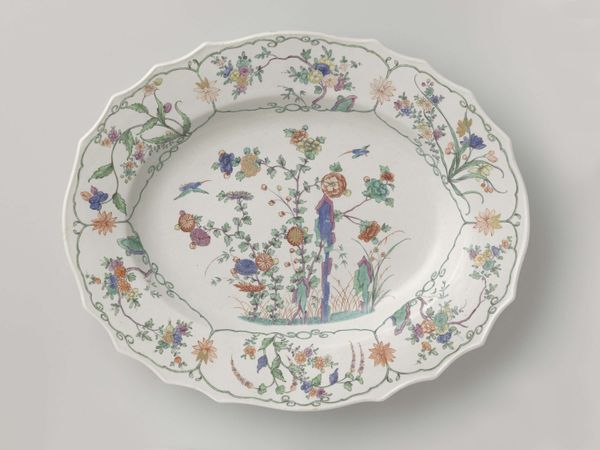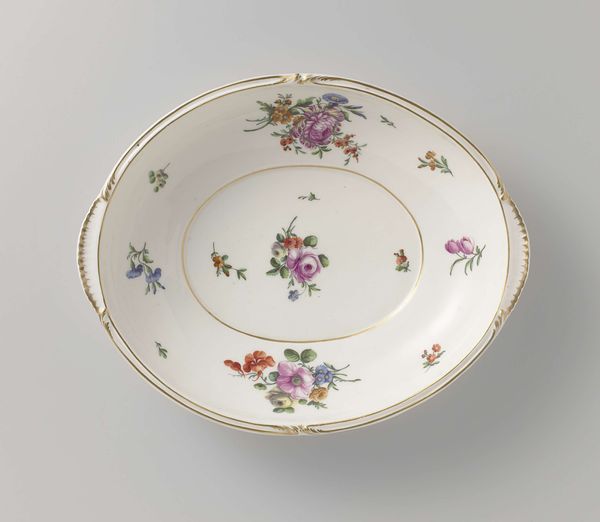
ceramic, porcelain
#
neoclacissism
#
ceramic
#
porcelain
#
england
#
ceramic
#
decorative-art
Dimensions: 7 1/2 x 7 1/2 in. (19.05 x 19.05 cm)
Copyright: Public Domain
This side plate was made by Wedgwood around 1759, with creamware and painted enamel. Creamware became very popular in the 18th century because it was cheaper to produce than porcelain, and easier to decorate. Josiah Wedgwood was a master of marketing and capitalised on creamware's democratic appeal. The green vegetal decorations on this plate might seem innocent, but Wedgwood was catering to a burgeoning middle class eager to emulate the lifestyles of the aristocracy, for whom owning fine china was a status symbol. Wedgwood was also at the forefront of industrial production. His factory was divided into specialist workshops with a rigid hierarchy of labour. But in 1783, he infamously produced a medallion for the Society for Effecting the Abolition of the Slave Trade. Wedgwood was a complex character. We need to look at original factory records, letters, and design books to fully understand his art and its place in the social and economic world of the time.
Comments
No comments
Be the first to comment and join the conversation on the ultimate creative platform.

